Nicola Cantan is the brains behind Vibrant Music Teaching, a massive subscription-based online platform offering resources and support to music teachers globally. It features a wealth of creative teaching methods, printable resources, and courses to help teachers build their studios and engage students.
I’ve been a paying member of Vibrant Music Teaching (VMT) for nearly 18 months and I think it’s great.
There’s a vast amount of material in there and it’s growing all the time. If I ever need a resource for teaching a particular theory concept, I always check the VMT catalogue and I almost always find something useful.
The resources are colourful, well-thought through, and fun to use. They appeal particularly to children and tweens, but I’ve used them successfully with teenagers and adults too.
I can’t go into detail on everything that’s included (because there’s loads!) but I do want to draw your attention to the creativity resources.
Creative cornucopia
There are so many creative resources in Vibrant Music Teaching! Here’s a screengrab of the results page for “composition”:
And here’s just some of the results for “improvisation”:
Rather than exploring everything, I’m just going to highlight a few of my favourite resources. I’ll cover:
Lesson plans
Composition workbooks
Scales creativity resources
Creativity lesson plans
First lessons
It’s really useful to have a written plan for a first lesson, and especially good when they’re really well thought through. Nicola has prepared two template lesson plans for beginners aged respectively 5 and 12 years old and both plans are fantastic. There are loads of creative activities and the plans ensure that musicianship is established right from the beginning.
(Note: all images are linked to the Vibrant Music Teaching site, but these links are only accessible to VMT subscribers. If you subscribe, come back to this article and you’ll be able to click through to easily find the resource in question).
10 week long “Composer Cultivation” lesson plan
This excellent resource shows us how to incorporate improvisation and composition work into a term of lessons for early intermediate students. The plans are 20 minutes long, which means in a 45 minute lesson there’s plenty of time left for “traditional” piano lesson work like etudes, reading and repertoire.
The plan is really well structured. It begins by introducing simple creative activities to get your students thinking about melody, rhythm and chords. In later weeks the students attempt quick composition projects with a particular focus: melody, harmony, lyrics (songs), stories, articulation, structure, and accompaniment patterns. These are quick, fun, and easy to do, but they also cover really crucial creative concepts.
Composition workbooks
There’s a lovely set of composition workbooks with a variety of topics:
These are primarily designed for group classes but also work well individually. Students are guided through the process of finding inspiration and creating a 16-bar piece. This works particularly well when used in combination with the 10-week Composer Cultivation lesson plan mentioned above — the workbooks are suggested for use from week 7 onwards.
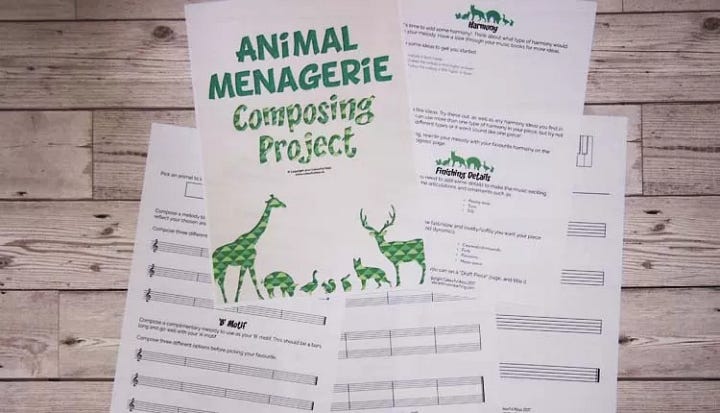
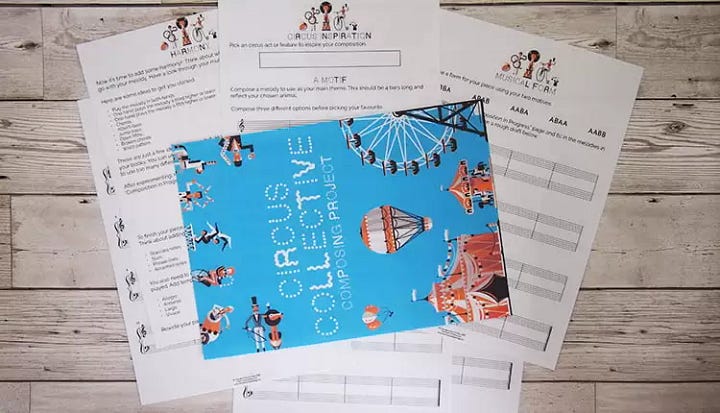
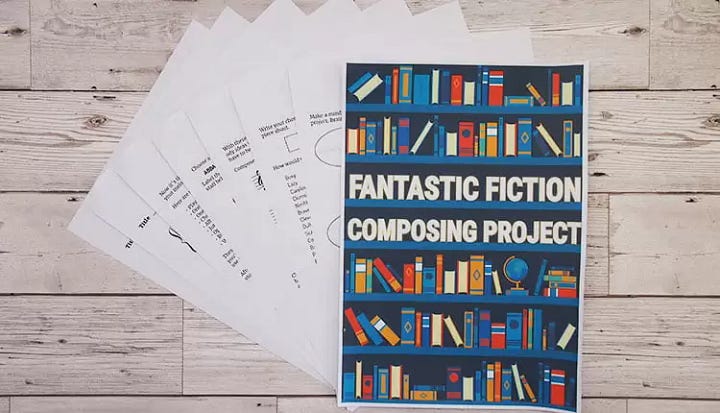
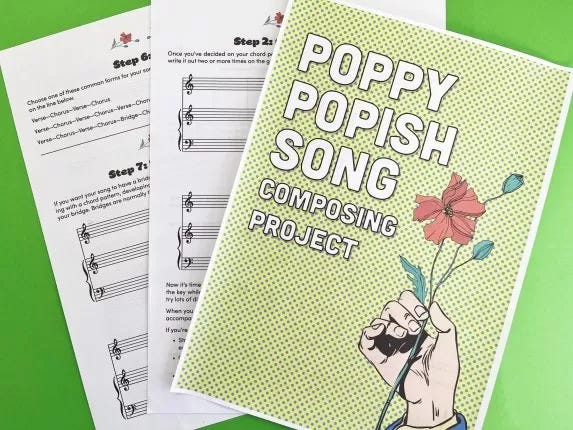
Scales creativity resources
There are several good resources for getting students to use scales creatively but the flip books are my absolute favourite — and they’re a big hit in my studio!
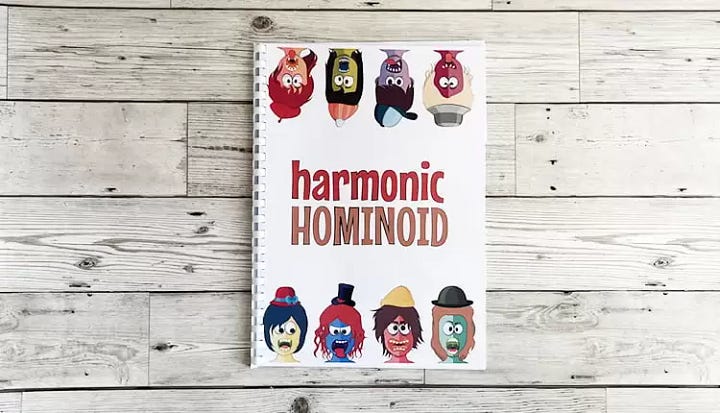
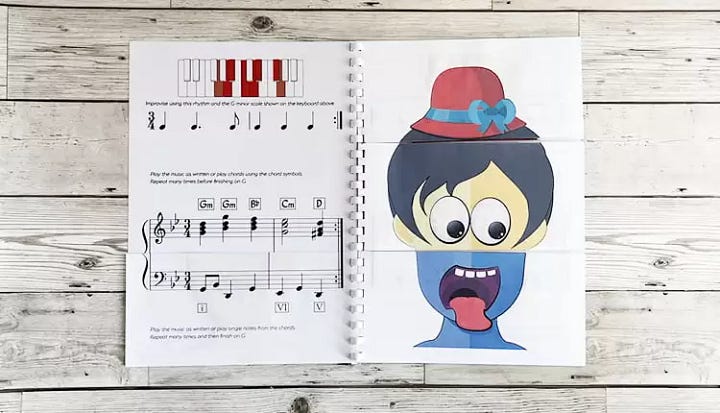
They’re really fun. You and your student(s) combine the flippable pages to make a nice accompaniment pattern and get a good melodic idea.
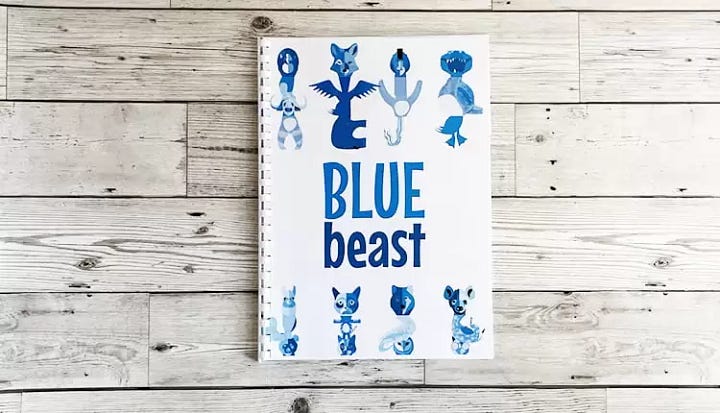
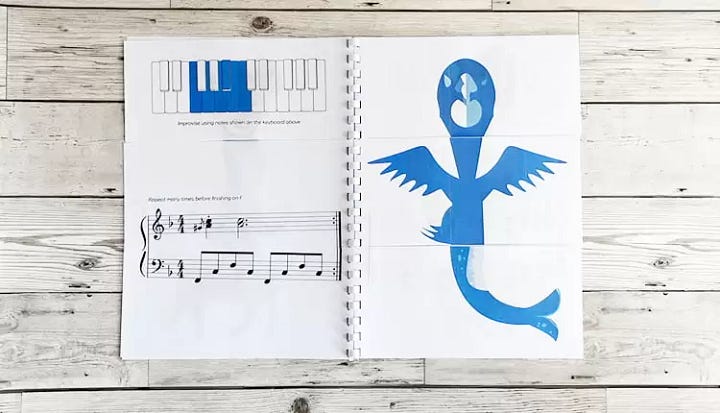
The illustrations are really fun. My students really enjoy making funny combinations, which then leads to interesting musical results.
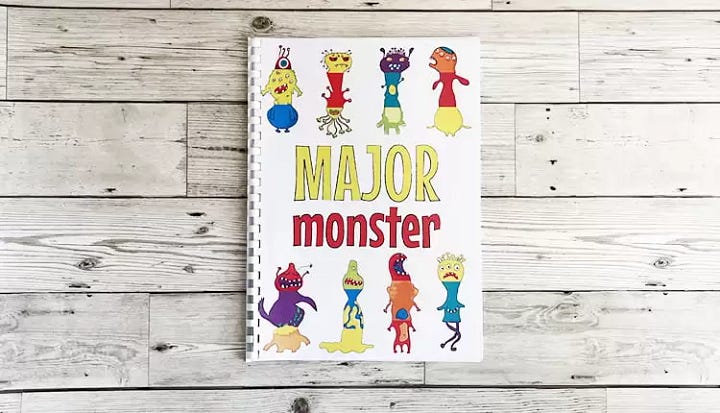

I love the fact there’s a Phrygian version (an awesome mode that doesn’t get enough love). It has some really juicy chord combinations that I really enjoy.
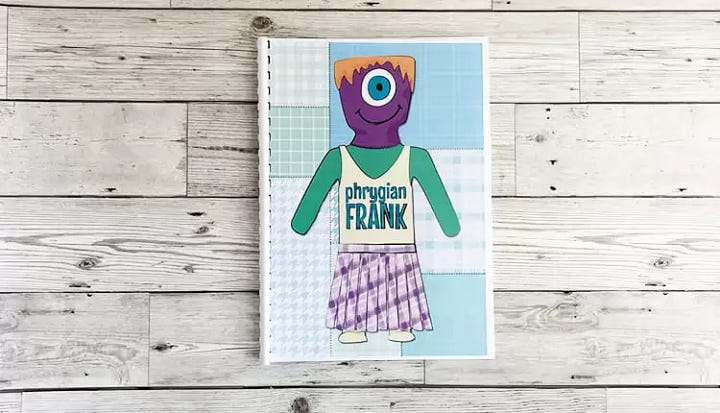

I find these work really well for students of all levels.
With elementary students I usually get them to play the melody, while I play the accompaniment they’ve chosen.
With late-elementary and early-intermediate students, they play through each of the 3 voices, while I play the other two (e.g. they might play the bassline while I play the chords and melody, or they play the melody while I play the chords and bassline)
With late-intermediate and advanced students, I get them to do 2 or more parts at once, while I do the other one.
It’s extremely quick, taking no more than 5 minutes, and the music can be taught by reading or by rote.
Conclusion
Even though creativity isn’t the main focus of Vibrant Music Teaching, the site has a lot of high quality creative resources on offer.
Besides the creative resources, the VMT subscription includes a wealth of material: technique, theory, repertoire, practise guides… the list goes on! Outside of the subscription, she also runs an excellent YouTube channel and the Vibrant Music Teaching Podcast, both of which are free of charge.
I’ve used many of the resources and regularly listen to the podcast and Nicola’s teaching experience and knowledge is evident throughout.
Her advice is practise-centred, humane, and very kind. I don’t know her personally but she strikes me as a very impressive individual.
If you’ve never checked out Vibrant Music Teaching, I encourage you to do so!
Are you a VMT member? What resources did you enjoy? Let me know in the comments below.
Interested?
Nicola introduces Vibrant Music Teaching below:





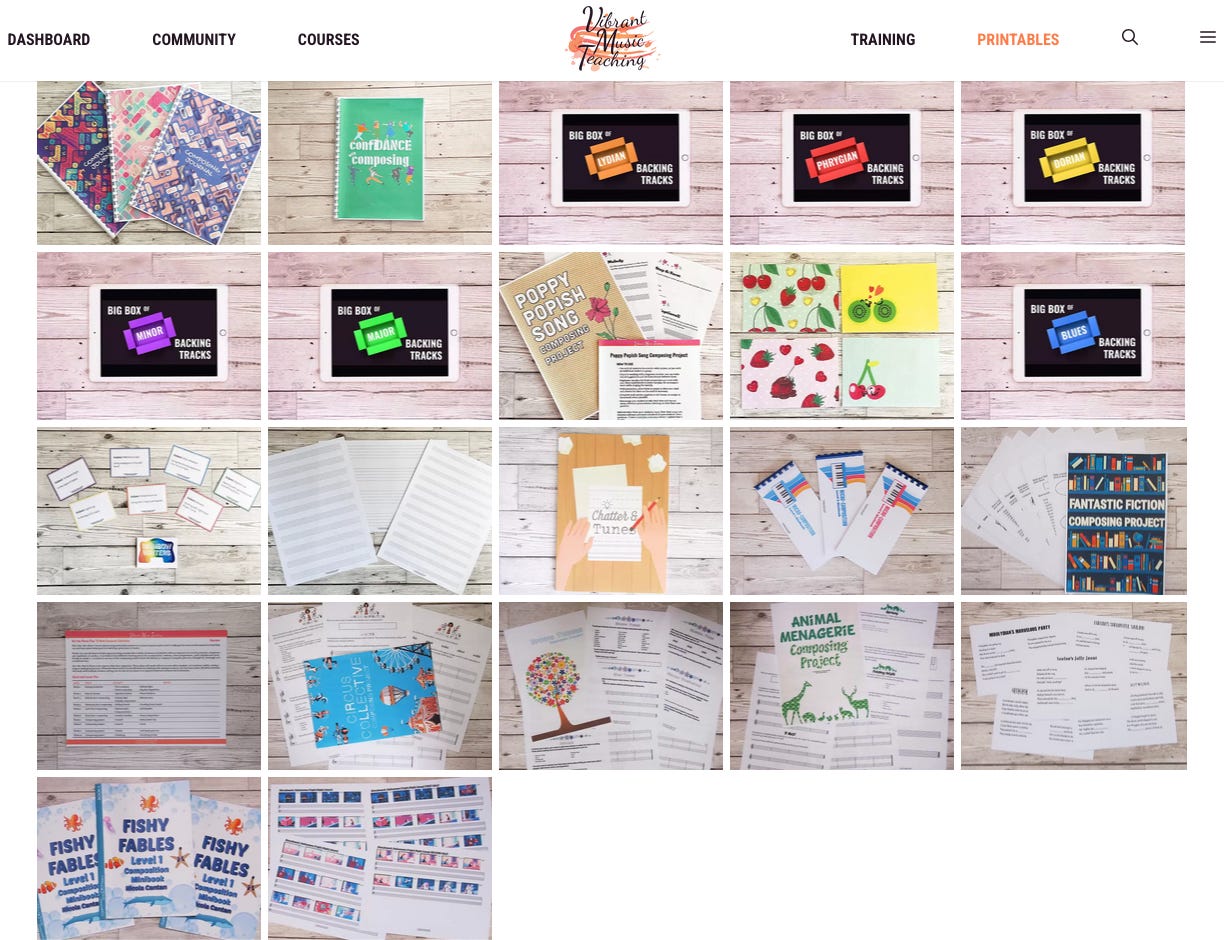
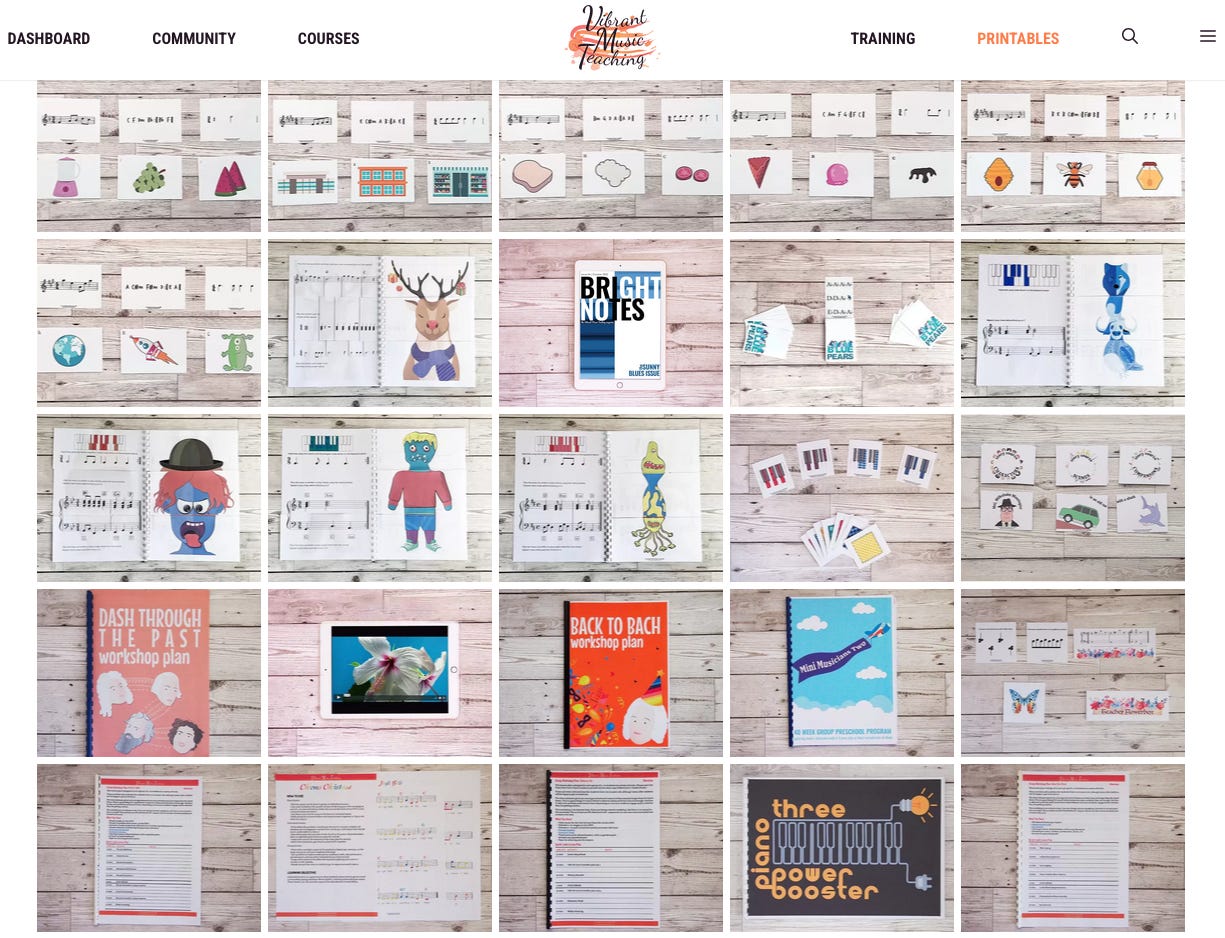
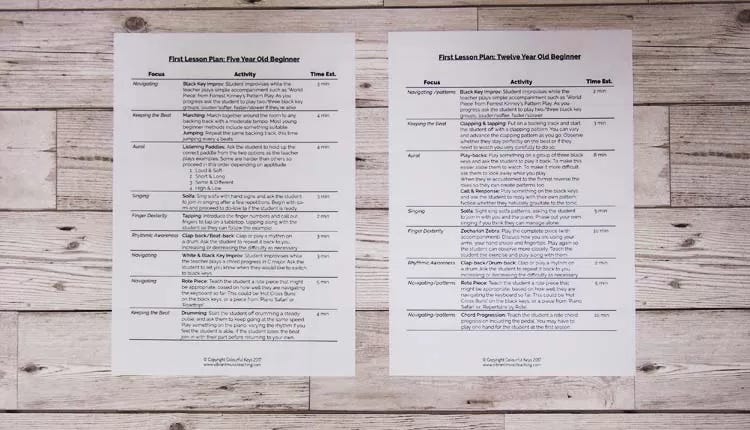
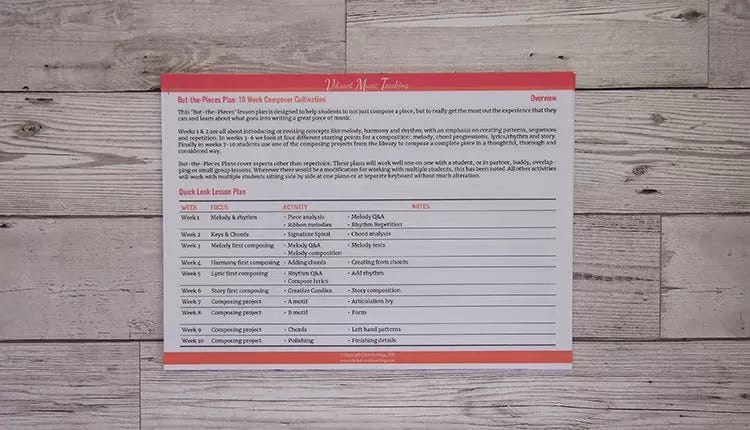
I’ve been a member in the past, but I did find the sheer volume of stuff available claustrophobically overwhelming, to the point I was finding I didn’t really use it 🙈 I did consider rejoining recently, but it’s now almost double the price I was paying.